Olá Angola!
I got a warm welcoming once I crossed the border into Angola. Instead of asking me for money, the immigration staff gave me sardines and biscuits and said “Bem-vindo ao nosso país maravilhoso!” translating into “Welcome to our wonderful country!”. The kids were sympathetic too, instead of shouting “mondele” (white man) and starting running after you, kids here shouted “amigo” (friend) and did thumbs up. I took off into the green hilly scenery with a smile on my face and started to mentally think in Portuguese that would be the language I would use from now on.
My first night was spent together with a family sitting in front of a bonfire and talking about different things. Just like in the Kasai and Equateur provinces of the DRC, I was told stories about “strange explosions” or “bangs”, followed by “something rising into the air” in valleys with water sources or streams. In the DRC people were mumbling about this being mercury getting released, but all the time I thought this sounded very strange although certain forms of mercury can be soluble in water. Yet here, in a different part in a different country, I heard a similar story. And just like before, they talked about this happening extremely rarely, but somehow on timed occasions. I remember people in the DRC telling me something like “I know where it is happening, but I don’t know when. Do you know the time?”. I even heard about a conspiracy towards two Catholic missionaries from Germany who supposedly had built a facility on top of such a place, because they knew the secret – they knew “the time”. I know that it all sounds very mysterious, but I wonder if any of my readers have heard something similar or have any idea whatsoever on these phenomena and rumors, in that case please send me an e-mail!
Then we started talking about Angola’s rich mineral resources, and I asked if there were any gold or diamonds in the nearby rivers. They didn’t know because they didn’t know what to look for, but they said that they had heard that people had been in the area before and extracted something. When I told them that I knew how to find gold, their eyes lit up. I love the feeling of mutual excitement in the air that arises when such ideas are discussed, not to mention when it gets executed like it in this case was the following morning. We went panning using pots and shovels but didn’t find any gold, but among the iron dust, I found some interesting transparent/bluish stones that felt heavy, but not hard. After I taught them how to pan, the old man got gold fever and didn’t want to leave the river so it was dark by the time we got back home, haha!
I had been struggling with spokes snapping on the back wheel for a long time, and just before I reached Maquela do Zombo, it felt like the whole wheel gave up on itself. All the spokes became sloppy at the same time and I didn’t dare to ride anymore with a wheel wobbling from side to side. Instead I decided to rebuild this wheel as well, since I had a new set of spokes with me this time. It was a bit different than building the front wheel because of the heavy Rohloff hub, but it turned out nice.
Angola became independent as late as 1975, and then followed an almost 30-year long civil war that didn’t end until as recently as 2002. Given these two facts, it was amazing to see how fast the country had been developing, compared to its neighboring DRC that I just came from. I was surprised to find 24/7 electricity and street lights, and the Catholic mission I stayed at in Maquela even had brand new lecturing halls filled with computers! At first it felt a bit lonely though because I had become so used to people asking me questions and following me wherever I was going, whereas here I didn’t get much of that kind of attention. Just like Guinea-Bissau, it felt like Angola had a Brazilian vibe about it, with a lot of music and dancing. I stayed four nights in a row in different Catholic missions and the hospitality was incredible. I was always given a room and a three course meal with wine and beer!
The next place on my itinerary was called Pedras Negras. It’s a collection of spectacular rock formations standing high above the surrounding plains, and there is a road leading into the heart of the mountains revealing a village called Pungo Andongo. The formations almost look surreal and the contrast between the gray rock and all the greenery is beautiful. Plenty of baboons inhabit the area as well.
Forests of baobab trees lined the road and the flirty fruit ladies kept on feeding me as I descended towards the coast. The closer I came, the more intense did the traffic become, and it felt like all of the trucks carried construction material. I could tell that I was approaching the rapidly developing capital Luanda. A place where one liter of petrol only costs 60 euro cents, but you have to pay around 10 euros for an imported head of lettuce.
In Luanda, the Swedish ambassador Lena invited me to stay at the Swedish residence two blocks away from the president’s mansion. A beautiful house with an interior that made me feel just like home! Emelie and Leila working at the embassy had been preparing a traditional Swedish “Lucia” celebration and asked if I could sing. I had not participated in a Lucia procession since I was a kid so it was fun to put on the cone-shaped hat again and getting déjà vu’s from the song lyrics! After the performance, a buffet full of Christmas food was waiting for the guests and I made some new friends while mingling around.
I spent some happening days in Luanda. I bought spare parts to the bike and got a discount that almost made me blush (thank you so much, Gicate!). I spent some lazy time on the beach on the tiny peninsula called “Ilha” (meaning island) where you can find exclusive clubs, restaurants and yachts to cater for Luanda’s rich elite. Together with some of the other Lucia-participants, I went to a Christmas lunch at the Norwegian residence and after that we continued to a fancy beach club called Shogun to have drinks and watch people kite-surf. The night was rounded off with a visit with James and his family to the local theater Elinga.
I was invited to come along on a fishing trip one day which turned out to be very exciting! The captain had what he thought was a 50-70 kg marlin on but it dived straight down until there was nothing left of the thick line so it snapped. This is not the first time I’ve been on big-game fishing when the equipment fails, it’s so annoying! Later I was told that some of the biggest marlins in the world are found in these waters… Anyway, we tried finding collections of floating seaweed, under which dorados (or mahi-mahi) often hide. We caught four, one each, and not only is this fish exceptionally beautiful, it’s also super tasty. Together with James friendly family, we grilled it and drank Cuca beer at Ilha.
The last night in Luanda I gave a speech at the embassy where I showed photos from my trip. Thank you all so much for the hospitality during my stay here!
On my way through the outskirts of the capital, the police said it wasn’t safe to cycle so they decided to drive behind me until I found a place where I wanted to camp. I thought this was rather weird, because they didn’t say anything when I pitched the tent close to the road. The next day, I came to Angola’s surfing mecca Cabo Ledo, which I discovered was not a surfing mecca at all (at least not during weekdays). Instead I met a retired captain who took me for a tour around the area in his old car. He was so generous with beer, both towards me and himself, that I got a bit worried. But he said “don’t worry, if you drive with me you drive with God”, as he pushed the pedal a bit further. I was happy to be back on the bike after that ride.
The climate changed over a few days and became more arid with little vegetation. Together with the busy main road following the coast the riding was quite boring actually. But it didn’t bother me much because I was approaching Benguela where I would celebrate Christmas and New Year with my friend Jonna! She had been working here as a teacher at Nancy’s English School (and Guest House). Nancy arranged so that I got a room and I found myself with such a good company that I felt like staying here a long, long time. I stayed two awesome weeks. We spent a lot of time talking about life in general, cooking delicious food, eating fresh fruit, exercising and doing yoga. On Christmas Eve, we prepared way too much food together with Nancy and then watched The Grinch in our own little cinema room. Molly the dog and cat Stevens were also watching. What a family I had come to! We spent many of the following days just hanging out at the beach together with Jonna’s friends.
One day we went freediving and spearfishing with Joao, but unfortunately the water visibility was terrible. Instead we (or he) picked slipper lobsters using a flashlight and then we spent the rest of the day wakeboarding!
On New Year’s Eve, me, Jonna, Nancy and Nuria had a great dinner before going to the main square together with a thousand or so youngsters. Then we took a stroll on the moonlit beach before going home. It was a calm night but a good start of the New Year!
When it was time to say goodbye, Jonna joined me for a bit before I was on my own again. She had baked an apple pie that I brought along with me and it tasted too good to be true when I feasted on it under the shade of a small bush.
Leaving Benguela, I soon turned off the main road and onto a smaller road heading towards Bibala. This road, sometimes just a trail, was very nice and took me through villages like Caloanga, Bolonguera, Impulo, Cassimbas and Lola. I was approaching areas where people lived more traditionally herding cattle, living in huts and wearing fewer clothes. Angola has many different tribes living in the south-western part of the country, and this is where I now was heading. The trail between Caloanga and Bolonguera made for great cycling! Perfectly packed gravel, soft curves, soft hills with nice views and mountains in the background. When I came to Bolonguera I encountered a group of beautiful Mucubal girls. They don’t wear anything on the upper part of their body but have very colorful fabrics carried elegantly around their waists and heads, together with bracelets, necklaces and sometimes golden ornaments on their forearms and ankles. The men don’t have as many ornaments, but often a piece of fabric hanging over their shoulder, some bracelets and always a stick which they use for herding their cattle. Both sexes wear ingenious sandals cut out from old car tires.
Another day, I camped outside of a Mucubal house but these people spoke no Portuguese whatsoever, and I realized that this was the first time on the whole trip that I had not been able to communicate. So instead we used the universal language of signs and charades which resulted in many laughs, especially under the influence of local corn booze. In this area they produce bowls by weaving layers of grass on top of each other using colorful plastic threads originating from rice bags, creating a spiral pattern. They are mainly used for serving a kind of porridge made from corn flour. I got hooked on the idea of purchasing such a bowl as a souvenir and when this family showed one of their “kimbalas”, I gave them an intentionally generous offer that put a smile on their face, and the beautiful bowl was mine. The following morning I woke up to a loud chatter. Around 20 neighbors had come to have a look at me, but the situation only became weirder when no one spoke Portuguese, so I decided to leave and cook breakfast along the road.
Angola’s most famous mountain pass is called Serra da Leba. Numerous hairpins take the driver (or rider) 1,000 vertical meters all the way up to the cool plateau at 1,845 m. I did it in about 2.5 hours and at the top, people were selling apples and pears so the difference in altitude had created a temperate climate.
I got a warm welcome from father Texeira and father Rufino at the Catholic mission in Lubango, where I spent a few days resting and stocking up on supplies in preparation for the remote south-western corner of the country. Loaded with a week worth of food and plastic containers to carry extra water, I left and spent the first night in the valley of the Mwila tribe, just east of Chibia. As far as I know, the traditionally dressed Mwila’s are more or less confined only to this particular valley, and they have what I think the most fascinating look of all the tribes in the area. However, they were apparently used to cameras and wanted a lot of money when I asked, so I left without taking any. I don’t know why and it sounds stupid, but I had a hard time accepting that I would leave without a picture. I remember that when I started to plan this trip, I saw a photo of a young Mwila girl from southern Angola and told myself that I would visit that area. And here I was but their little valley passed so quickly. Perhaps it was meant to be like that.
I had dropped several hundred meters onto the desert plains and came to the last “proper” village in what would be many days. Here, in Virei, I bought some final food items and asked the police about the road ahead. They thought it could become difficult to find water, but I put my faith into Rio Curoca where I was told there was a permanent Mucubal settlement. I had studied satellite imagery from this area for many hours and drawn my own map. I had not been able to find any information if other cyclists had done this route before, but I did find some motorbike and 4×4 reports that all told the same thing: the roads were in a terrible state and you could just forget about finding any supplies. Excited about the “bad” news, I took off into in the glowing evening sun and soon came across a group of Springbok gazelles. No wonder there is an expression saying “fast as a gazelle” – these animals can reach speeds of almost 90 km/h! And no, I didn’t get any picture of them either.
It’s always fun trying to map whatever you have seen on satellite photos and the place where you are. Things look very different, but when I was approaching the sand valleys near Rio Curoca, I knew my bearings. That was lucky, because I wouldn’t like to get lost here when I was running low on water. Even more luckily, the sand was quite hard in the tracks so the road was rideable, otherwise I would definitely have run out of water. But most luckily of all (otherwise I would have been completely screwed), there was indeed water in Rio Curoca at the settlement called Pediva. Although water was flowing very slow, had a bad color and tasted monkey, it was water after all. I swam out into the middle of the lagoon that the river had formed and submerged my containers and later added my purification pills. There was also a hot spring here with disgustingly green water, and given the hot climate it didn’t make sense to get in, but I thought I have to give it a go. I almost burned my feet in the hot mud and swam past a dead rat, then I went back up.
Just as I was about to leave I noticed some Asian workers behind a hill who were building a kind of entrance to the Iona National Park. I was surprised to find them here in the middle of nowhere, and judging by their reaction they were equally surprised to see me. Apparently their contractor had not provided them with building material for over a month, so they had been doing nothing but eating and sleeping for the whole time. They invited me for a Vietnamese lunch and believe me, they made my day.
Then the road became bad, really bad. Ups and downs, loose rocks, big rocks, deep sand and steep riverbeds – you name it. I was drinking all the time in the 41 degree heat. The plastic containers that I carried water in had had vegetable oil in them, and all the shaking dissolved a little bit of oil as I went so I fantasized about drinking milk. I would not be surprised if the water I drank had a 0.5% fat content. But it was surprisingly good. I found water in one place but it looked outright dangerous and had full of animal tracks and animal excrement surrounding it. I had enough for the night and the next half day or so, so I moved on.
The area I was now traversing is home to another nomadic tribe called Himba. More common, and more “famous” in Namibia, these people live in mud huts. But the few settlements I saw on this road were abandoned due to the lack of water for themselves and for their cattle.
Finally, when I came over a mountain I found a river that had water in it. But it was almost standing completely still, smelled a bit foul and was full of algae and ooze. Further downstream I found a bigger pool where the water looked much better, so I dug a hole in the sand and waited for the sand to settle. It had a hint of salt in it, but it was ok.
By the end of the day, I came to a small settlement called Otchifengo. There was a small kiosk here and I instantly downed three cans of passion fruit soft drinks. Then all of a sudden I hear something that sounds like a metallic robot and I see a dark red figure at the corner of my eye and realize that it must be a Himba. These people color their skin with ochre, a natural pigment found in the earth. They grind stones to create a powder, which they mix with either animal fat or oil and then smear onto their whole body, mainly for decoration. They also wear several ornaments on their necks, forearms and legs, and the women have things hanging from their body that make rattling noises as they walk. Boys have one braided plait, girls have two, married women put extensions and the ochre mixture in their hair and married men have shaved heads. Around their waist they all wear a piece of calfskin.
When I reached Lola, I met yet another tribe called Mucawana. Instead of using ochre in their skin mixture, they use ash and look as black as black can get. Just like the Mwila, this tribe is extremely localized and I only met them here.
I was shown to trails leading to a place called Monte Negro at the Kunene River. Supposedly opposite the Epupa Falls on the Namibian side, I was hoping there would be a possibility to cross the river here. But unfortunately the police didn’t have any stamps and were not sure if they had any at the other side either, so they told me that I have to go around all the way to Ruacana instead. This would mean a detour of exactly 300 km’s! I guess there was no other option than to do just that. We spent the night watching TV through a window of the police station that had been hit by a South African airstrike during the war.
I continued cycling east on trails following the Kunene River. The police had a hard time explaining the route to me, but I figured that if I just follow the river itself I can’t get lost. The trail had several branches but I set up a rule saying follow the river or the “closest” trail that has at least one recent motorbike track on it. It didn’t work. But before I had to start backtracking I met some slightly suspicious-looking men claiming to be old police officers. They offered to take me across the crocodile-inhabited river in a canoe, but I didn’t feel like getting problems with the Namibian authorities on the other side so I declined their offer. When they saw my shoes (now worn beyond repair after 25,000 km’s), they immediately said take them off and we’ll give you a new pair. So I left them with a brand new pair of Angolan army boots and a detailed explanation of how to find my way out of this trail maze.
I continued on the rocky trails and roads without meeting many people. After a couple of days, I made it to the Namibian border and the friendly Angolans persuaded me to stay one last night on their side and bought us so many Cuca beers that I later struggled to put up my tent, haha!
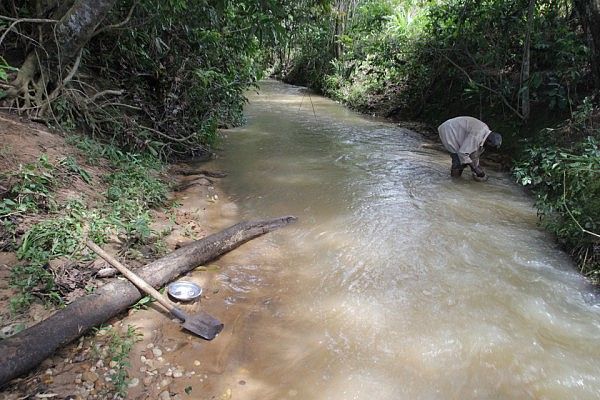
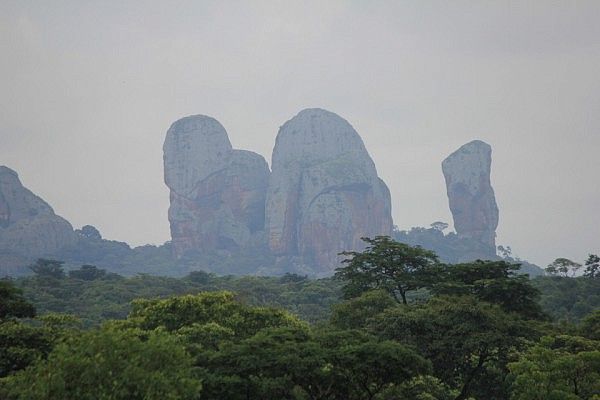
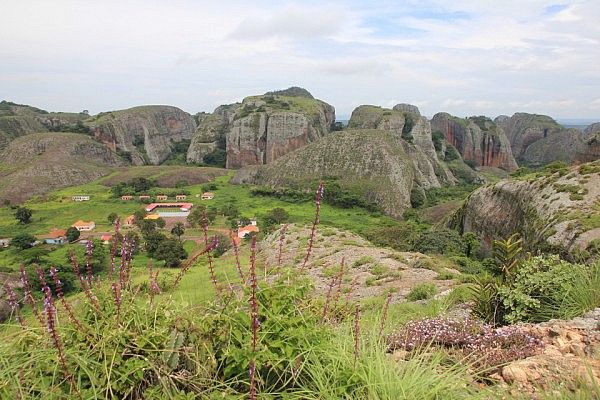
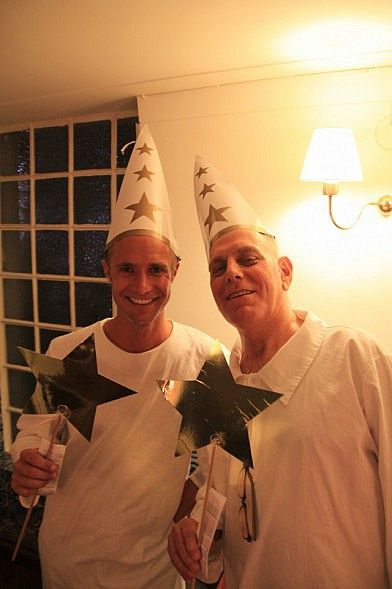
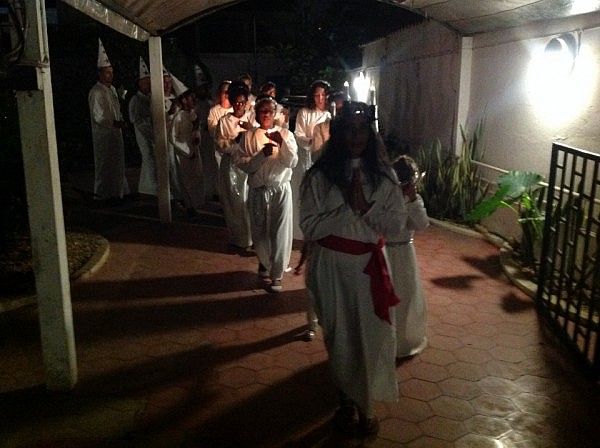
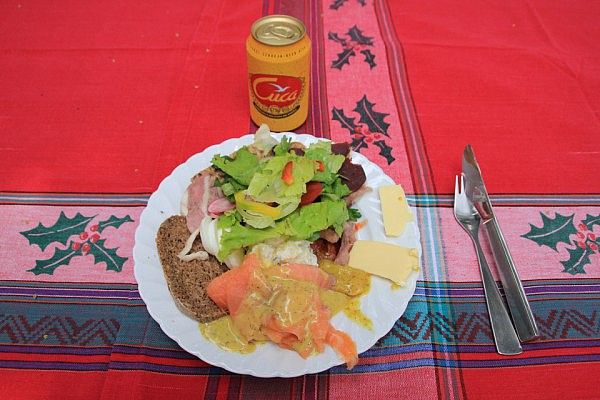
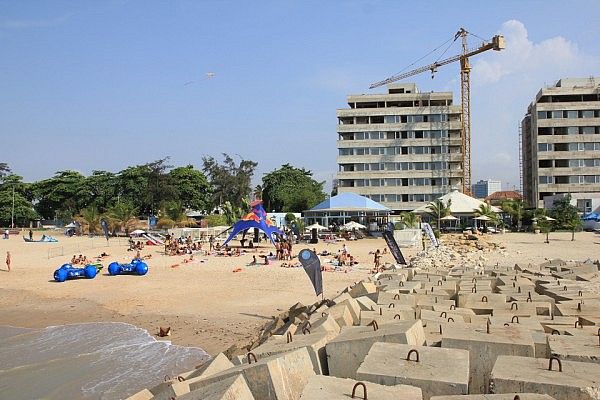
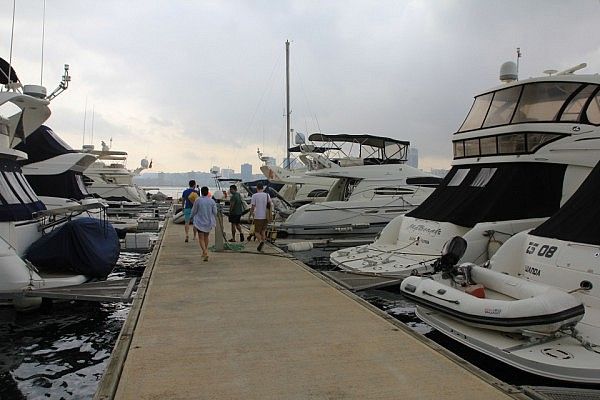
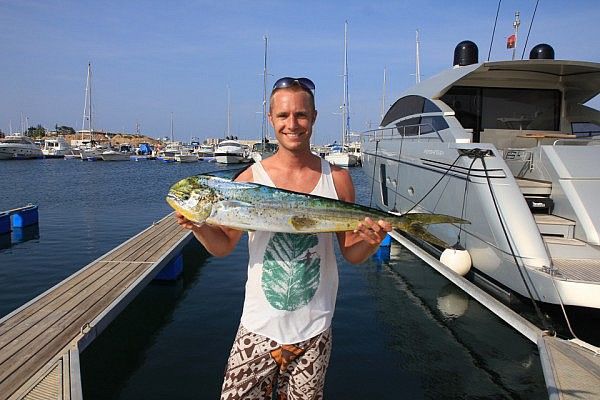
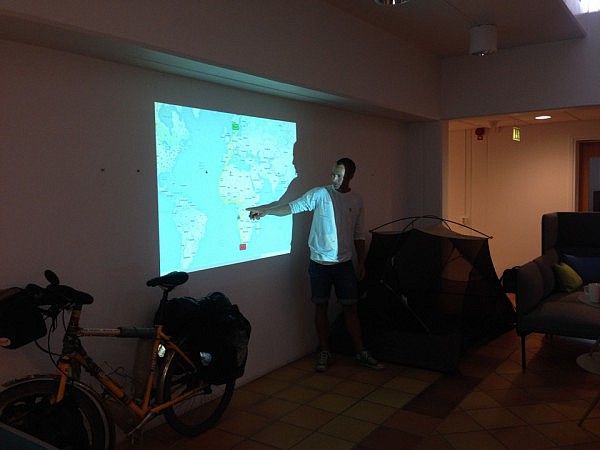
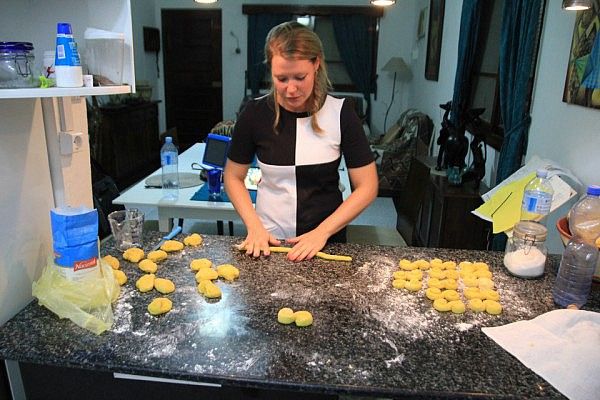
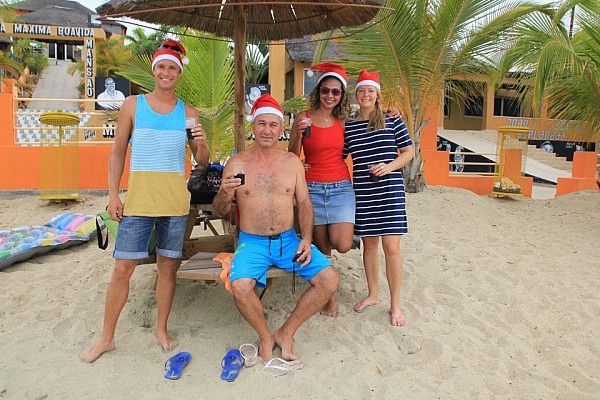
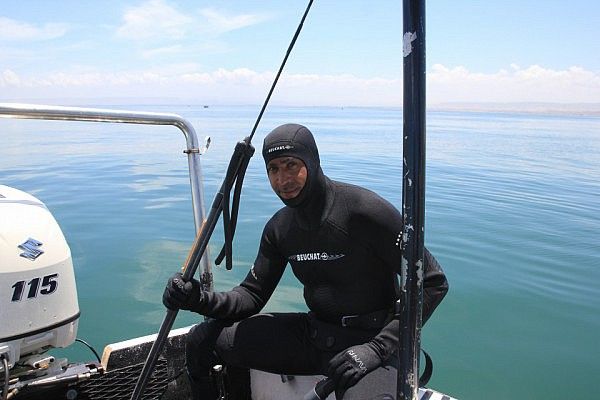
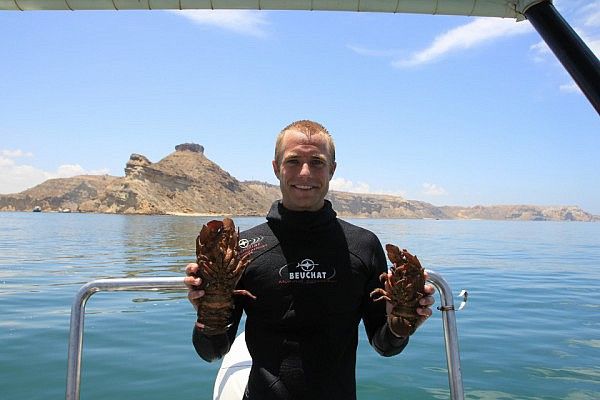
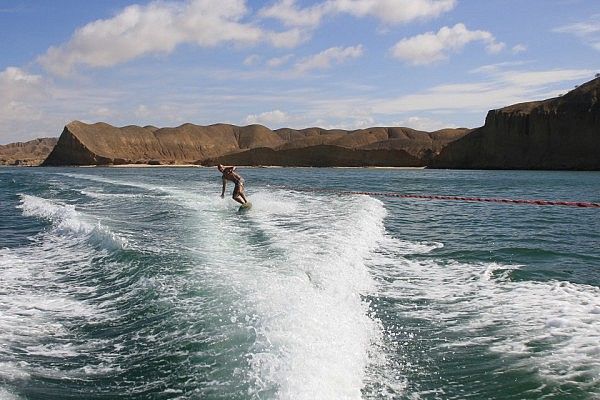
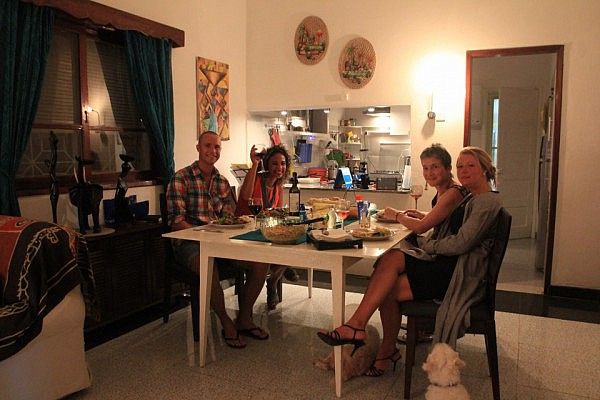
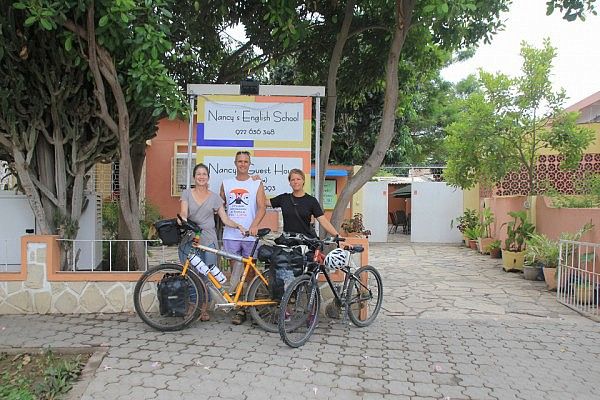
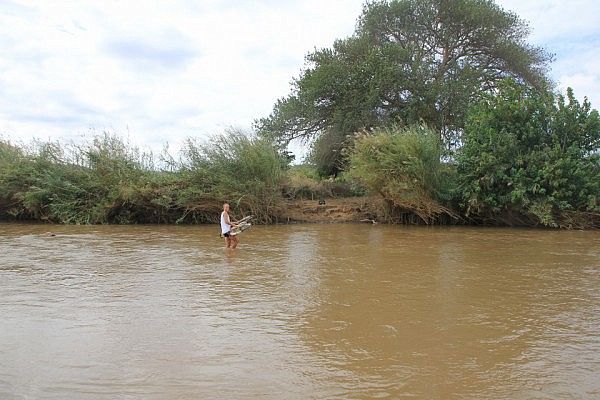
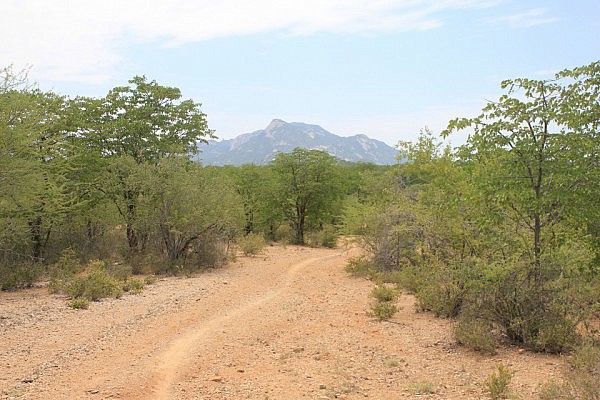
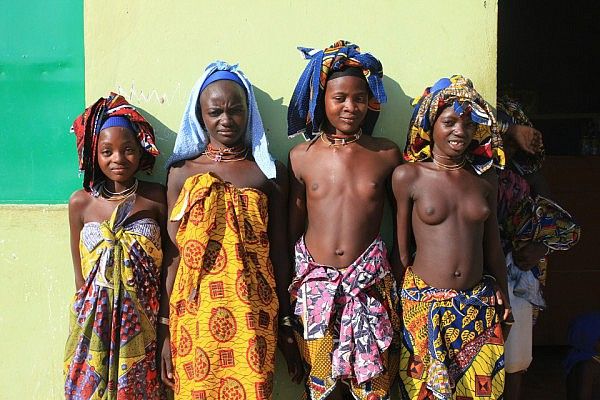
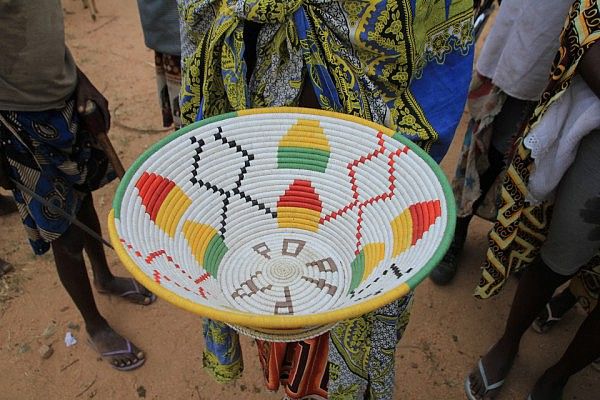
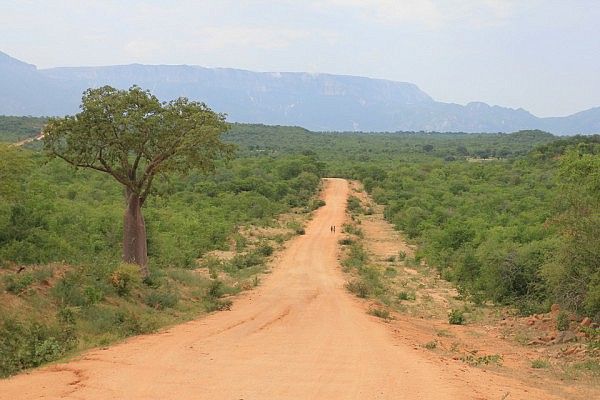
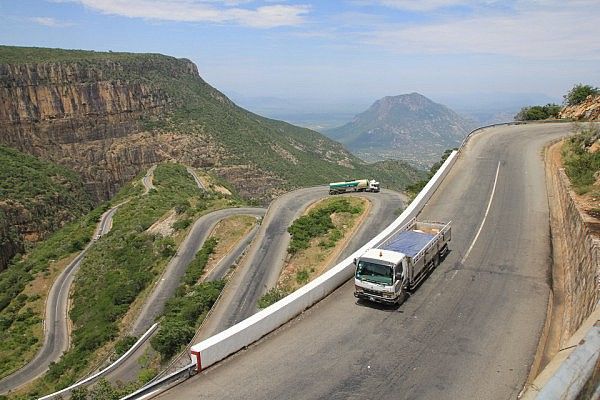
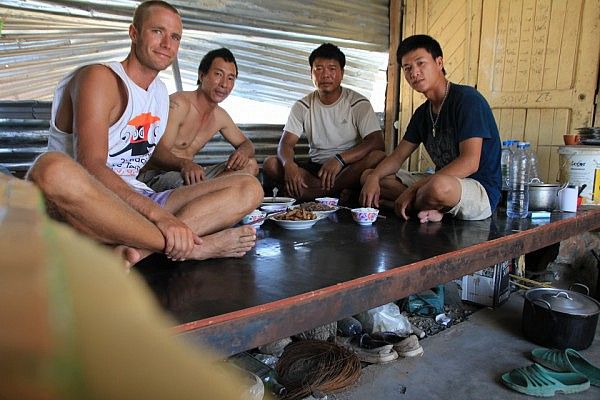
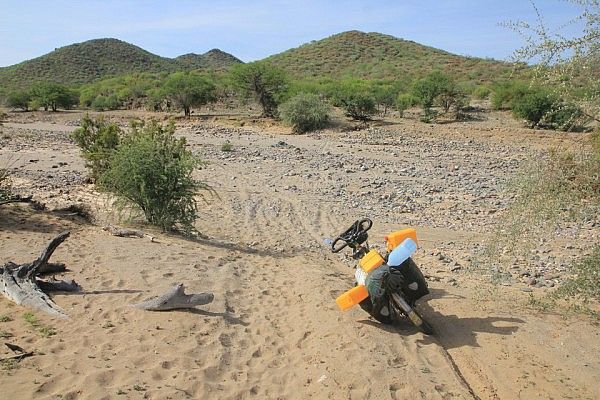
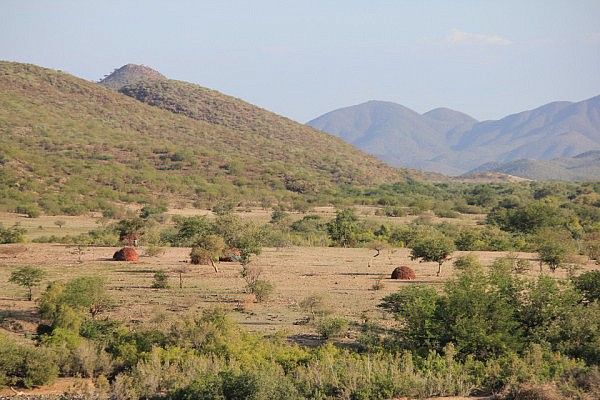
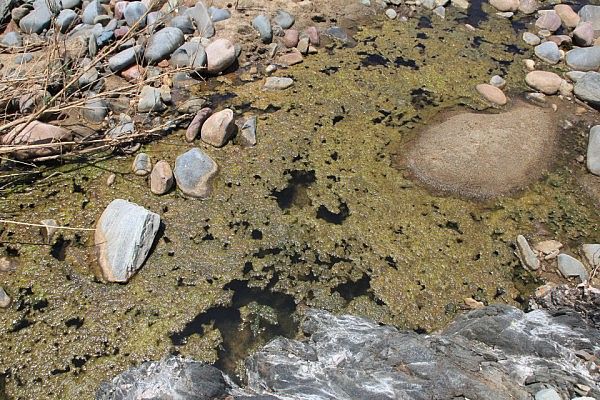
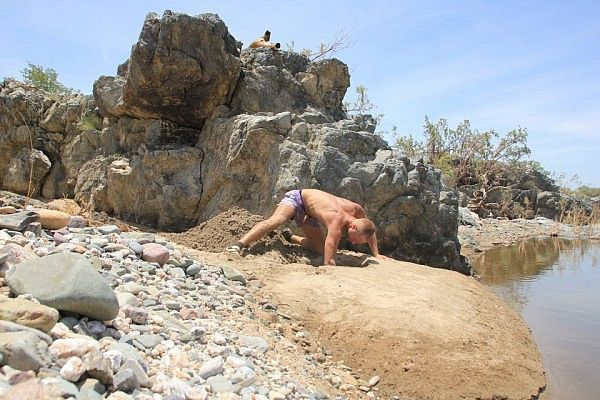
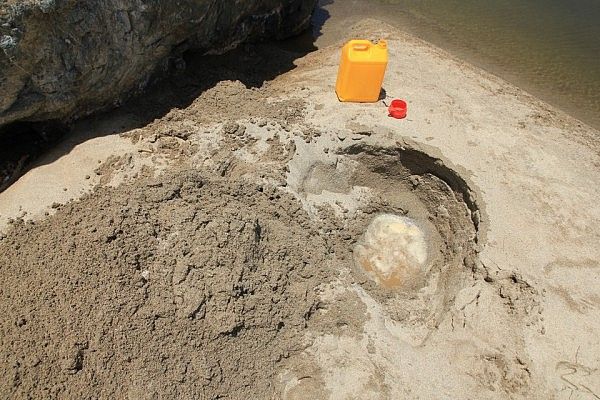
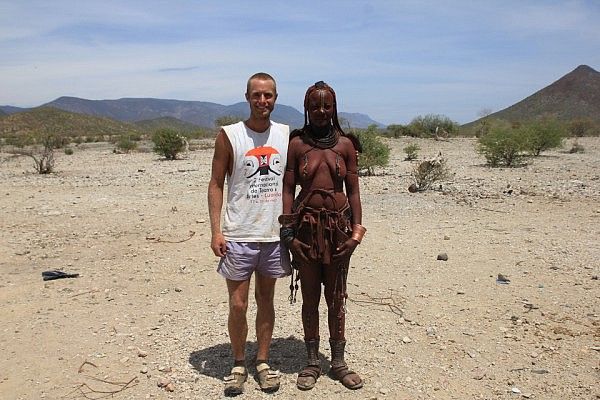
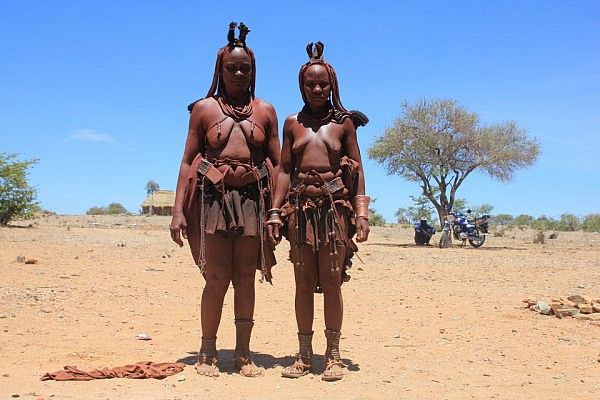
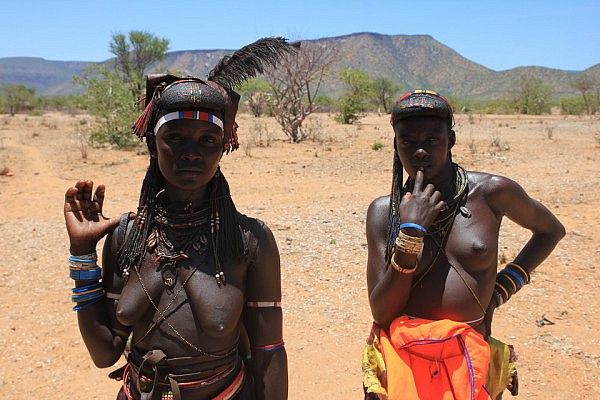
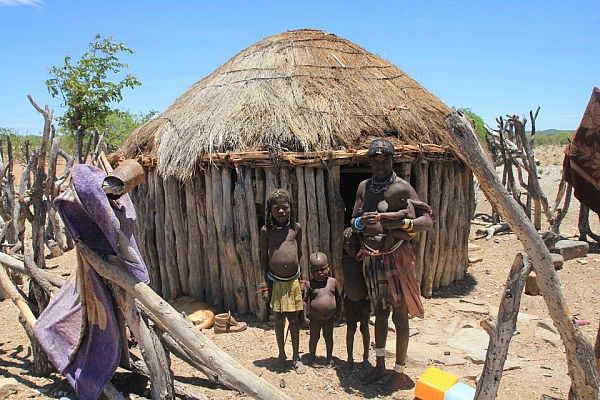
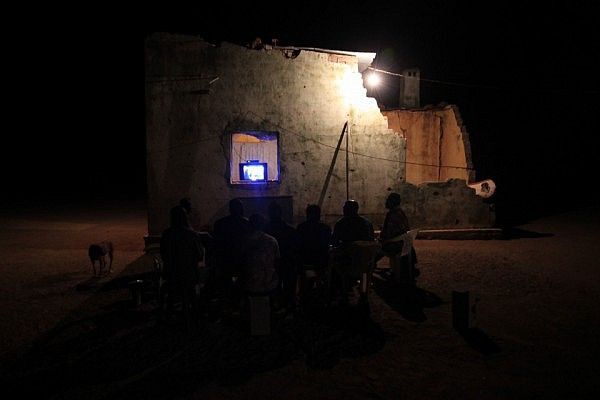
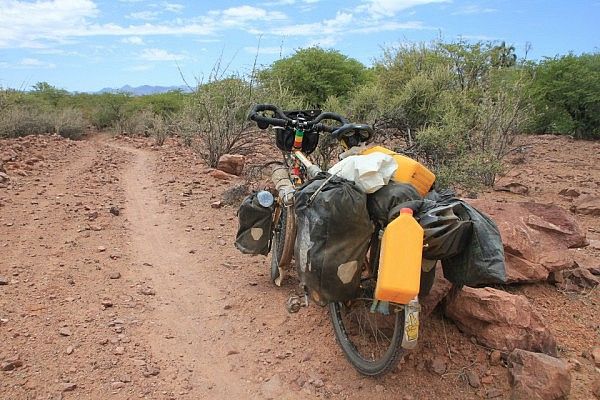
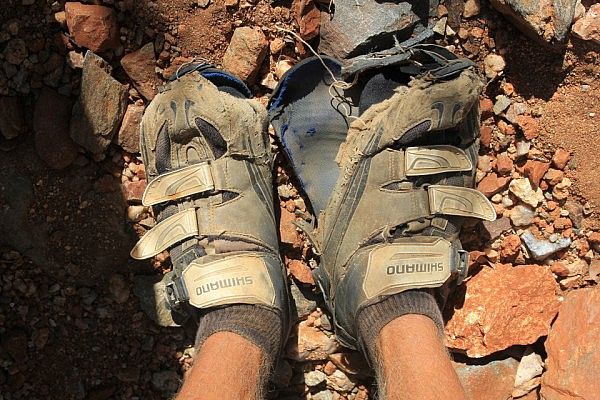
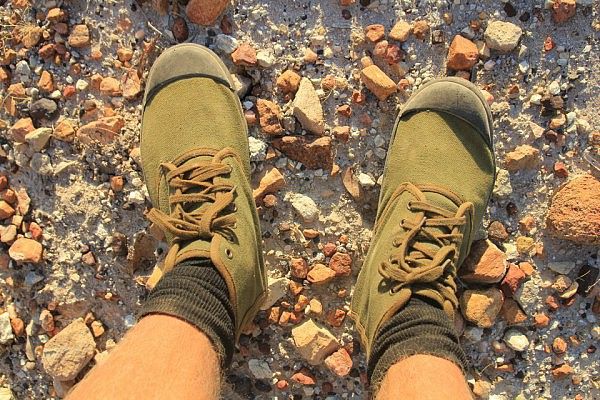
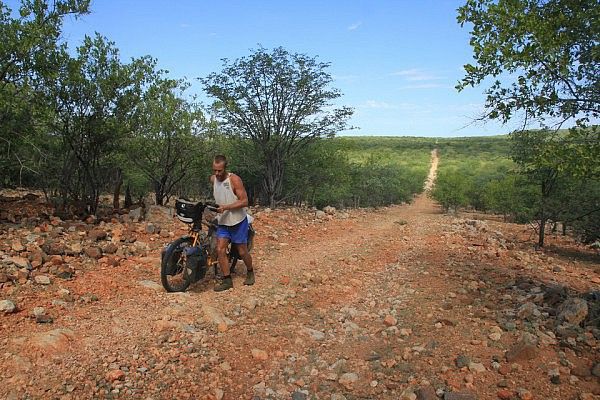
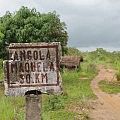
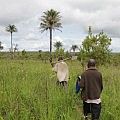
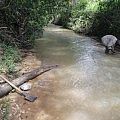
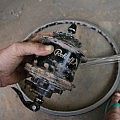
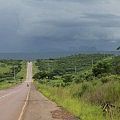
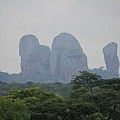
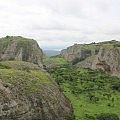
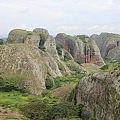
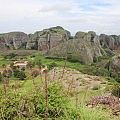
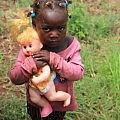
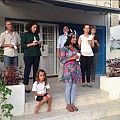
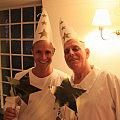
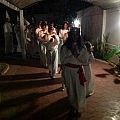
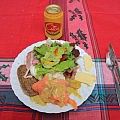
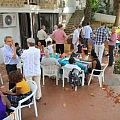
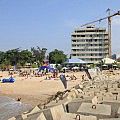
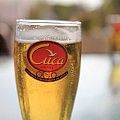
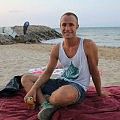
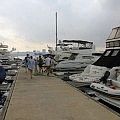
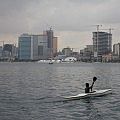
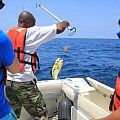
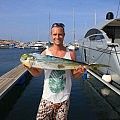
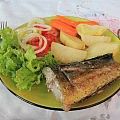
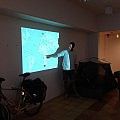
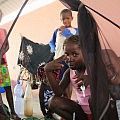
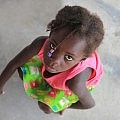
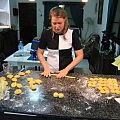
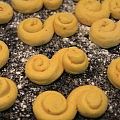
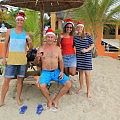
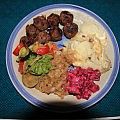
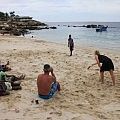
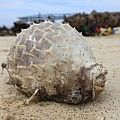
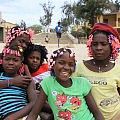
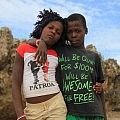
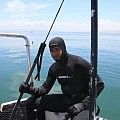
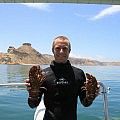
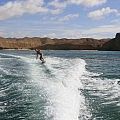
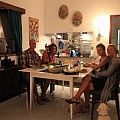
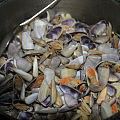
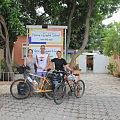
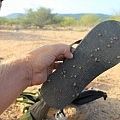
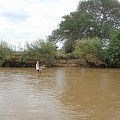
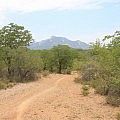
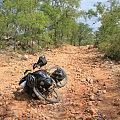
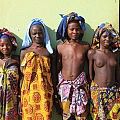
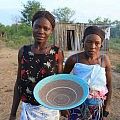
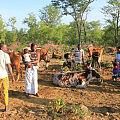
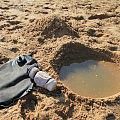
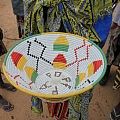
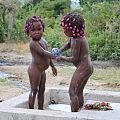
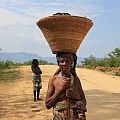
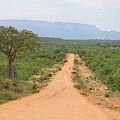
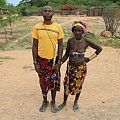
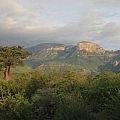
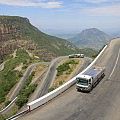
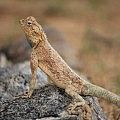
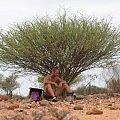
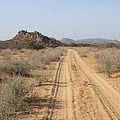
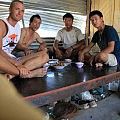
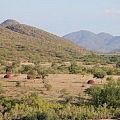
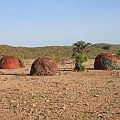
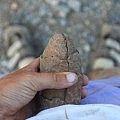
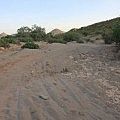
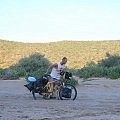
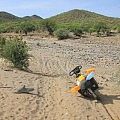
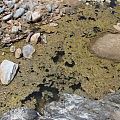
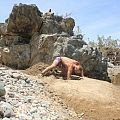
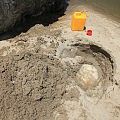
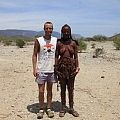
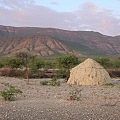
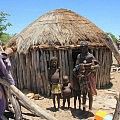
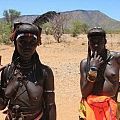
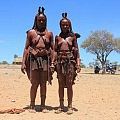
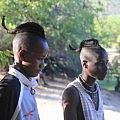
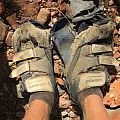
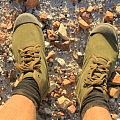
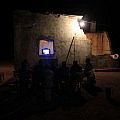
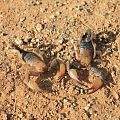
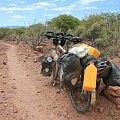
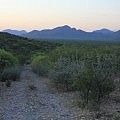
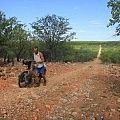
Hello Man !!!
I saw you in Paris 2 years ago !
You are Very courageous Man !!
Go on !!!
Alexis
Så spännande att följa dig. Waiting for yr next blog post in Namibia. Good luck!
Looking forward to hear your stories in person here in Cape Town :-)
Congratulations! Looks like you have made it to the southern tip of Africa! So proud of you! Can’t wait to read about the rest of the journey and what you decide to do about your return.
Herb & Gail
Hi, here is Meike from Germany. I was working at Chameleon Backpackers in Windhoek where you spent a few days! I’m so glad I found your blog! I started to read it from the beginning (until spain today ;), it’s so interesting! I hope you are good and you are enjoying time in South Africa at the moment :)
Meike
So you made it to the end: fantastic! Now all you need to do is turn around and go the other way. :-)
Let us know when you’ll be back and we’ll book the conference room Viking so you can talk about your trip to all your former colleagues. And I guess you can get your job back if you want it; we all miss you!
/Peter
Truly inspiring!
Hy
I hope you enjoyed Angola. I was twice by bike in Angola. First time start from cape town trough namibia to Lubango. Down in direction namibe and then north along to coast (first dirt road and then tar to luanda. 3 years ago i went with my wife from windhoek trough namibia (Messum crater, Dores Crater) to the cunene (crossed kunene at ruacana) then trough the desert over pediva in direction namibe (we cam on the tarred road 70km before namibe). we also have only found some information of motorbikers or 4×4 for this trip. it was very beautiful. We think there are only and hand of people who have done this.
Martin and Monica